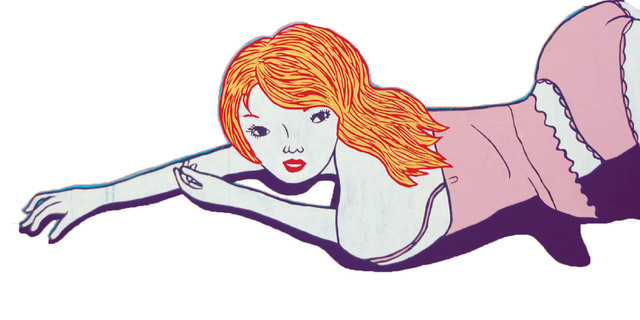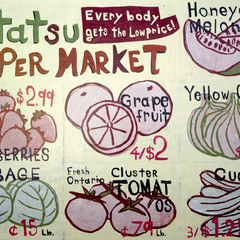
Main Gallery
2014 PAINTING WORK
Kotatsu Iwata
2015.1.17 Sat-2015.2.14 Sat
Tezukayama Gallery will hold an exhibition of recent work by our New York based artist, Kotatsu Iwata. The exhibition is titled ‘2014 Painting Work’ and will be held from January 17th until February 18th 2015.
This will be the third solo exhibition of Kotatsu Iwata in our gallery.
Artists such as Roy Lichtenstein and Andy Warhol powerfully captured a generation. Iwata works are clearly influenced by such pop artists, however, it’s important for him to use something from today’s society. In the ’60s, Lichtenstein would pick up images and motifs from magazines and phone books. Today, Iwata picks up images and subjects from the internet.
His drawing technique is influenced by Seiichi Hayashi. By drawing a rough sketch with a pen he carefully examines and expands the object as it is.
Iwata, at first, draws the original magazine advertisement image or a motif from the newspaper. After transferring the enlarged data onto the canvas, he begins to apply the acrylic paint. Although he always paints motifs from advertisements including images and slogans, for him, he is hiding this mechanical element by creating images of his own intention. By merely looking at the paintings one cannot clearly see Iwata’s thoughts or purpose.
Recently, Iwata has begun silk-screen printing on the surface of the painted canvas to produced halftone effects. Many Japanese comic book illustrations use this effect, which creates different layers of spatial depth. Using a similar technique, Iwata creates his own style.
One can find the contrast between the physical and the mechanical in Iwata’s work. Although the images Iwata uses to create his paintings are mechanical, secondary images taken from media and advertising, are physical representations of his own intention. In contrast, one can see the mechanical nature of the reproduction technique that is the silk-screen pattern in his work. In a way, he is creating his own canvas.
By allowing various audiences of perspectives and thought, separate from the artist’s intention, makes it work that allows a variety of interpretations. This exhibition of work, shown for the first time in Japan and mainly produced in New York in 2014, will comprise of about 10 paintings.
We look forward to your visit to our first exhibition of 2015.


